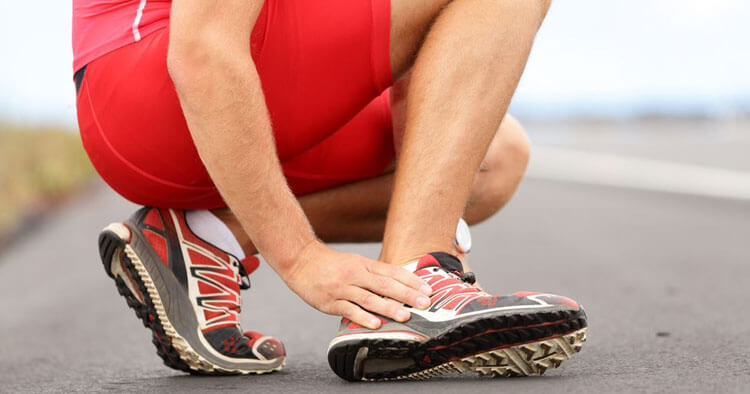Injury Rehabilitation and Training, Muscle Pain and Tendinopathy, Sports Injuries and Management
Achilles Tendinopathy: Achilles Tendonitis A Thing Of The Past
Achilles Tendinopathy A Blanket Term
In recent years there has been a shift in the way achilles tendon complaints are labelled and managed. This change has come about primarily because of increased understanding around the actual histology of the tendon and its painful structures. With this there has been a movement away from labelling all achilles complaints with the standard diagnosis of “achilles tendonitis”. Achilles tendon issues are generally now referred to under generalized nomenclature “achilles tendinopathy”. With-in this blanket “tendinopathy” label, you can further sub-classify achilles tendon pathology to:- Paratenonitis, which is inflammation of the paratenon only.
- Paratenonitis, accompanied with tendinosis, where there is inflammation of the paratenon, and abnormalities of the tendon.
- Tendinosis, with abnormalities of the tendon only.
- Achilles tendon insertional enthesopathy, where there is pain and\or change where the achilles tendon attaches to the back of the heel bone.
- Rupture or structural partial or full thickness tears of the achilles tendon
The Purpose Of Classification
Note: Such classification of achilles tendon pathology is not agreed upon across the entire medical profession. Above are listed some general classifications of achilles pathology. Classifications that some physiotherapists as well as other medical, and allied medical professionals will refer to when looking to further classify achilles tendinopathy. Worth noting here, is that simply classification of a type of tendon complaint does not specifically indicate the cause of complaint. However classification can aid in the prescription of appropriate management.Achilles Tendon Issues Are Typically Non-Inflammatory
Studies have shown that the histology with achilles tendon complaints is generally non-inflammatory. Where significant numbers of inflammatory cells cannot be found in the symptomatic tendon. The majority of achilles tendon pain is in fact more a degenerative. An overload condition with attempts at repair, than an inflammatory one. The previously classic term “achilles tendonitis” with the suffix “itis” implies inflammation. However, as mentioned it is now recognized that an inflammatory process is absent in most patients with achilles tendon pain. And as a result “achilles tendinopathy” is the more preferred term. A name that is used to describe the clinical syndrome of achilles pain. That may, or may not be associated with swelling, stiffness, weakness, and impaired function of the achilles tendon.Achilles Tendon Pain And Its Management
Associated with an increased understanding around the histology of the painful tendon. Management of achilles tendon complaints has changed a lot. Doing so in an attempt to align with the new understanding of what is going on at a cellular level. Way back when I first started practice as a physiotherapist, achilles tendon pain was almost always given a rub and some stretching exercises. The approach over time has changed significantly. And is a lot more tailored to the individual. We now have a far greater understanding of what is actually going on with the tendon. Some approaches to the management of achilles tendinopathy include:- Eccentric exercises: Eccentric exercises are the most evidence-based conservative treatment modality currently available. It is however suggested that eccentric exercises may be less effective with insertional tendon issues. When compared with mid-portion tendinopathies. The impact of performing eccentric exercises is around its impact on neovascularization. And increasing type 1 collagen synthesis.
- Shockwave therapy: Shockwave therapy in contrast is suggested to be more effective in insertional, than non-insertional tendinopathy. And has comparable effects to that of eccentric training in insertional achilles tendinopathy. With the application of shockwave therapy the improvement in symptoms shockwave are hypothesized to come from the effects on neovascularization and angiogenesis at the tendon-bone junction. And inducing degeneration of epidermal nerve fibers with subsequent reinnervation.
- Nonsteroidal anti-inflammatory medication (NSAIDS): The use of NSAIDS has understandably been shown to have little benefit in many achilles tendinopathy pain conditions. This makes sense considering the histology typically suggests an absence of inflammatory cells that these medications would exert their influence over.
Injectables In The treatment of Achilles Tendon Pain
- Steroid Injections: The use of steroid injections either into, or around the achilles tendon are controversial. Currently, any prescription of a cortisone injection would most likely have to be suggested with the intention of reducing paratenonitis. The caution around the use of cortisone injections in and around the Achilles tendon is that there has been found to be a low risk of achilles tendon rupture following such injections. If the cortisone injection is guided via ultrasound into the paratenon to reduce inflammation of the paratenon. Then ideally the associated risk is negligible. Frequently any tendinopathy is a degenerative, non-inflammatory condition in which a similar story to the use of NSAIDS. Steroids such as cortisone would not have any significant effect.
- Platelet-rich plasma (PRP) and autologous blood injections: The aim with these injections, is for the concentrated platelet derived growth factors to stimulate a healing response. It is one of those situations where it makes good sense in theory, however there is currently mixed evidence justifying the use of PRP injection with Achilles tendinopathies.
Achilles Tendinopathy: A Runners Frustration
Achilles tendinopathy is common in several sports, from tennis, to volleyball and soccer… However, frustratingly achilles tendinopathy has a high incidence in top level runners (as well as recreational runners, especially those getting a bit long in the tooth). Accurate diagnosis of which “sub-category” of tendinopathy the pain is related to, is important. So, engaging in the most appropriate management can help in accelerating the recovery process.Disclaimer: This information is provided as an educational service and is not intended to serve as a substitute for personalized medical advice. Sydney Physio Clinic does not endorse any treatments, procedures, products mentioned in this post. Anyone seeking specific advice, or assistance regarding “Achilles tendinopathy” should consult his, or her physiotherapist, orthopaedic surgeon, general practitioner, sports medicine specialist, or otherwise appropriately skilled medical practitioner.


